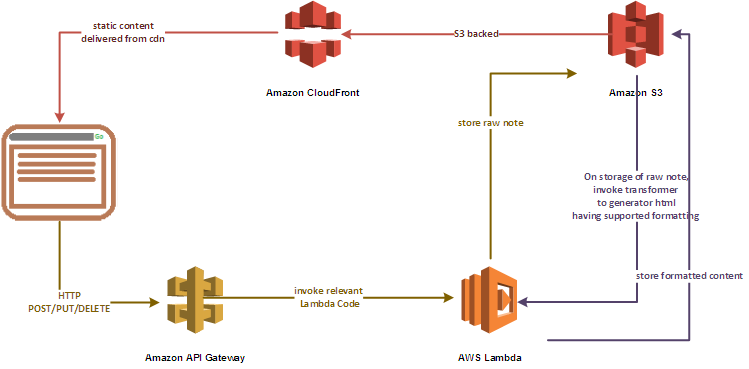
I still remember that night of year 1998. Me and my friend sat with a bunch floppies to install Novel Netware Server on a hardware physically sizing to about same as home refrigerator. And at next day morning we had server ready, giving us ability to share files among a bunch of PCs, and user management. The word “Server” would mean real big thing in those days. Exaggerated analogy could be “In those stone age days!” Lot of things changed in those stone age days v/s now, and today we are talking about Serverless architecture.
Serverless architecture really seems promising to me. It is new paradigm, and once developer toolset and frameworks matures around it, we would be going to new exciting world! Obviously Serverless architecture does not literally mean that there wouldn’t be any server, from that perspective the name is miss-leading. What in nutshell means is software engineer, and deployment team wouldn’t need to do provisioning of the software that solves business problem. Health monitoring software will take care of it, and that too depending upon load. Scalability needs starting from running on ‘No server’ to ‘N server’ will depend upon the load at a point of time. It all started when AWS one more time proving themselves to be leader in the area of cloud innovation, by introducing AWS Lambda in their offerings back in end of 2014. And recently Microsoft also published similar service in their Azure offering, called Azure Functions. Google’s GCP is also following the lead and has offering with name Cloud Function.
Serverless architecture is Microservices and Scalability on steroid!
This are couple of scenarios that I think it fits best:
- Startups can be most benefited with Severless architecture. In the beginning there will low usage, and hence less revenue, and hence need to have lessor cost on infrastructure and when the startup grows to large scale, the solution would react and scale to increased load automatically, and so would infrastructure cost. All of this without doing any code change, if Architected right in the beginning.
- Another scenario could be of IoT web service endpoint to which devices connects to push or pull the data. Number of connected devices would drive the infrastructure cost dynamically.
- Blogs and Content Management sites. Hey, this is big opportunity! There are many organizations in the world who do not want to have hassle of maintaining servers, do not want to spend a lot on infrastructure. But wants to have lightweight online presence. They will be greatly helped by having platform on which they pay by number of request coming to their site instead of fix hardware cost. What do you say? If you reach their before me, consider giving me credit for the idea :).
While all looks bright around Serverless architecture, here are few suggestions from my exploration:
- Use coding framework that is light weight on it’s boot-up time. This will avoid having long request time after cold boot, I’m using node.js
- While better toolsets for developers becoming ready and available for general community, consider using tools like Serverless package available on npm registry provided by Serverless.com. It works very well while working with AWS Lambda. It not only does the deployment of code on AWS Labda but also sets up HTTP endpoint in API gateway if event of Labda is configured to be HTTP endpoint. And everything works very seamlessly. Serverless package can be used even if your solution is not built in node.js
- Never try to do lot of things together in one Lambda/Function. Break down time consuming work into multiple chunk of work-items and utilize AWS Simple Queue Service (SQS), or Azure Queues.
- Do good enough logging, as that would be your savior to debug any issue.
Here is quick simple example. Let’s first go through requirements: Application allows user to create, view, edit and archive notes
- User can add notes. Application records the note along with date-time when it was posted
- While adding or editing notes, user can do formatting. Supported formatting would be making text bold, italic, and underline
- User can view list of notes order by date-time it was posted in descending order
- User can archive note. On archival note would be filtered out from the list of notes
- User can review list of notes that are archived
Here is how it is structured:

I’m in process of enhancing this example application with more features and in the process will end up using more of AWS services.
- Authentication and Authorization,
- Storing more structure along with note, like author, tagging the note, sharing the note with other subscribers.
- Searching note
- Attachments
- Notification on shared note change
And to support these features will use DynamoDB, Simple Email Service (SES), Simple Notification Service (SNS) and Simple Queue Service (SQS), and more.
Eager to see unfolding of new ways of building and deploying software!

